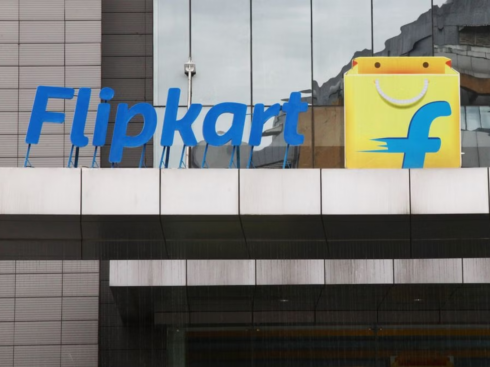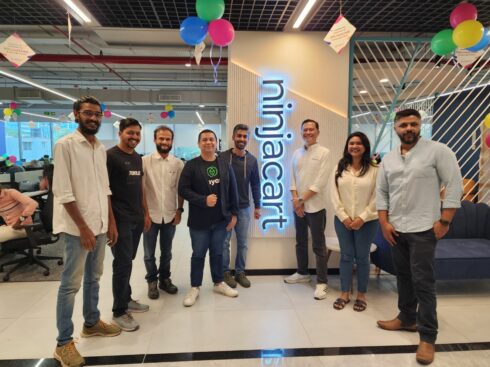“What does it take to deliver a huge SaaS company from India?”
“A perfect DIY (Do It Yourself) product, where the discovery and fulfilment of the product is all online. The moment it is human aided, it becomes difficult, you might be able to sell to a few but you won’t be able to scale.” says Avlesh Singh, co-founder of WebEngage, an onsite customer engagement suite which enables ecommerce companies personalized engagement with their users across mobile, web, and email.
But on diving deeper with Avlesh, it became clear that it there’s a lot more behind that seemingly simple statement. It requires a lot of gumption, a vision that will serve as the north star for the entire company, a killer instinct, a fanatic drive to go after the pain points of your customers, the ability to shift one’s perspectives many a times in the pursuit of that goal, the persistence to continuously be at your product to refine it to the hilt, the ability to change at breakneck speeds, and mostly a supreme faith in the efficacy of what you have created!
Last October, when WebEngage celebrated its four year anniversary, it quietly rolled out AppEngage, a mobile marketing automation suite which would go beyond the usual event tracking and push notification products. The idea was to build enriched profiles for anonymous users and customers using a client’s app, track behaviour and interests to build user profiles and target them effectively.

And four months later, on 31st December, WebEngage announced that it’s morphing into a multi-channel user engagement platform; or as Avlesh puts it, “From that nice cute tool which shows pop ups on the side of your website, WebEngage will now become a DIY marketing automation solution which allows you to engage across multiple channels and maintain a very rich profile of users so that you can target them effectively.”
From that nice cute tool which shows pop ups on the side of your website, WebEngage will now become a complete DIY marketing automation solution!
WebEngage has been working industriously since the last six-seven months to build this complete DIY platform. It had to go backwards, question itself on AppEngage, and get challenged on many tech assumptions before it could roll out its new avatar. The company which literally was the first one to engage that anonymous user on a customer’s website has come a long way from being an on-site customer engagement and feedback service. And it certainly has a long way to go as it brings in this new transformation, behind which is a journey that it has traversed. Delivering a huge SaaS company from India is a tale with many unique twists and realizations.
From Restaurant Reviews To Building An Evernote From India!
The story of the beginnings of WebEngage cannot be described without the experience of the founders at the restaurant reviews website, Burrp! Avlesh was the first employee to be hired at Burrp, which is where he met Ankit Utreja, the other co-founder of WebEngage. Back then Avlesh’s dream, in his own words, was “to build an amazing consumer product and a kickass engineering team.” However sometimes timing plays a crucial role when it comes to the success of startups. Post the acquisition by Infomedia, things started to decline.
Says Avlesh, “While we kind of fit in their focus, dna-wise Infomedia and Burrp were very different. Both the teams failed to realize that. They wanted to make Burrp into a Justdial but it was just not meant to be. Also, we failed with our timing at Burrp. Smartphone penetration was still catching up, no one was keen on writing reviews at that time or search that extensively online for recommendations. It was just not meant to be. I literally keep on saying that Zomato ate our lunch! They stole the thunder right from under our noses!”
Zomato ate our lunch! They stole the thunder right from under our noses!
So while their dream of building an amazing consumer product did not materialize at Burrp, they decided to realize it with their next product, Webklipper. Says Avlesh, “With Webklipper, we were trying to make an Evernote from India. And we realised it wasn’t as easy as it sounded.”
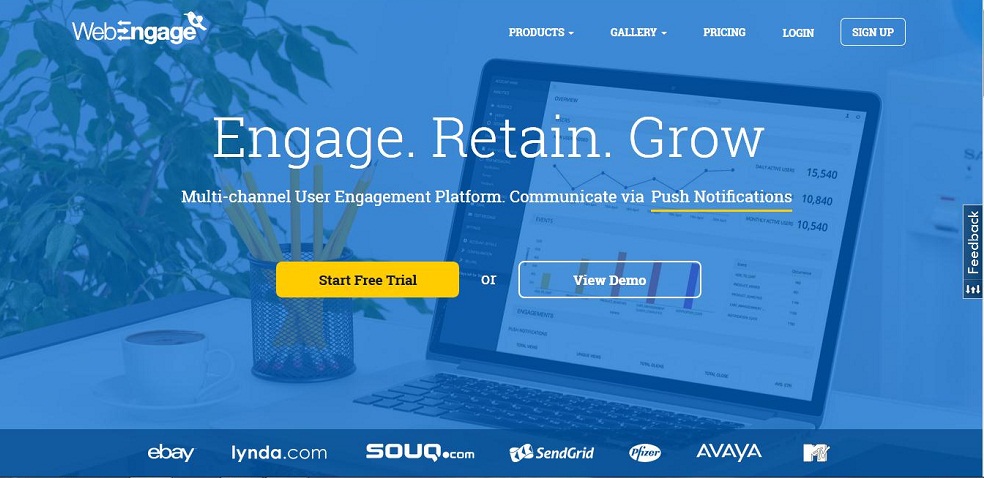
So while product execution was ok, Webklipper managed to engage 25k-30k active users, the problem was monetizing the business. Just like Evernote has failed to monetize and is still running on investors’ money, Webklipper faced the same issues. It was then that Avlesh realized that consumers don’t want to pay for these businesses.
Recounts Avlesh, “They think these utilities are meant to be free. Even when we wanted to charge something as low as $10, consumers were not ready to pay even that paltry sum! Similarly our enthusiasm to raise investor money also met with a dead end. It was then that the shift in mindset happened – and we decided to move to a B2B model from a B2C model.”
While Ankit, who mostly had a B2B background, was pretty comfortable with the shift, it was Avlesh who had always wanted to do the “nice cool fancy consumer stuff”. However with their not-so-cool B2C experience at Burrp and Webklipper, the duo decided they were better off building something for businesses. As they say, every cloud has a silver lining!
From Burrp to WebEngage – The Journey From B2C To B2B
Once the team was back to ideating again, the pain points that they faced at Burrp became their tipping point. They realized that marketing client’s promotions on the site had been a tough one. Whenever a client requested them to make some marketing promotion live on the site, it would get stuck at the tech channels as the tech team’s pipelines were choked.
Says Avlesh, “Imagine a client wants to run a promotion for New Year. Doing that ten days later makes no sense. We realized that it was a pain point but at that time we did not know if it was big enough for a huge market. So we built the whole product on assumption,”
And so WebEngage was born – “an on-site customer engagement suite and push-engine product that helps companies better engage with that anonymous user on their website.”
Through customised surveys, push notifications, and feedback forms, WebEngage not only created an on-site category as a market but also democratized it. Says Avlesh, “Over time with traction we realized it’s good that we made WebEngage because it’s a huge pain point for everyone. Marketing teams struggle to do that. And when you think of on-site marketing as a problem, you don’t even go to Google and search for it. So we basically focused on first creating a market and then establishing ourselves as a leader.”
The same people who earlier turned us down, appreciated us when we launched WebEngage.
While it may all sound quite rosy, yet it has been a long and bumpy road for WebEngage – creating a product and creating a market are two very very different things. When a company is trying to create a market for a product, it has to first make the customer realize that they need such a product, help them understand it; and then convince them to finally make the purchase. All of WebEngage’s discovery and pain points have been around this.
However, it has been a fruitful one. The team spent the first six-seven months in building the first version of the product and were able to monetize it in February 2012, selling it as a subscription based SaaS product. Additionally, they were also able to raise seed funding early on from a group of angel investors at the Indian Angel Network (IAN), led by Rajan Anandan – the then Vice President at Google India in October 2011.

Recounts Avlesh, “The same people who earlier turned us down, appreciated us when we launched WebEngage. So the shift in focus happened here. When we transited from B2C to B2B, we were primarily looking for an idea where monetisation is not a long term goal but is an immediate problem to solve. So I would rather build something and monetize it than wait for four years to get invested or figure out immense scale monetization. Those are tough bets.” But as user experience and traction shows, Avlesh’s bet paid off with WebEngage. Especially when he was able to sign his first enterprise customer, MakeMyTrip.
MakeMyTrip And The Wishlist
When WebEngage first started monetizing it’s product, the standard plan of $49 was launched. Its first paying customer was a completely random guy from UK, who still remains a customer of the company. Says Avlesh, “It was a validation that people will pay! However early experience of pitching WebEngage to clients taught us one thing – knowing who you have built your product for is very important.”
Knowing who you have built your product for is very important.
Given that Avlesh and Ankit were both engineers, they naturally thought that the best way to sell WebEngage was to developers, as it would allow them to incorporate on-site client promotion requests without changing the site and going through that entire cycle of engineering, coding and product testing. However, this completely backfired with this strategy as developers would instead think that they could make this product too and mostly assumed it was for free!
It was then that the team had to take a step back and bring about another important change in their mindset. Avlesh realised that the problem was not with their product or the pricing – the problem was with whom they were targeting. It was a moment of epiphany when realization struck; the value of his product to a developer only revolved around how beautiful and easy the interface is to enter some data. As opposed to this, the real value of the product was for the marketer who wanted to be able to run on-site promotions without going through their in-house tech team. It was then that they started pitching to marketers, pitching them on how WebEngage would simplify their needs without any coding or changes to the website.

Says Avlesh, “It was a defining moment for us. Though it might sound like a very small thing, all this was a continuous journey of discovery – the journey to product-market fit as they call it. This shift in approach also led to a complete overhaul of the company’s entire messaging; from a developer product, we became a marketing product.”
Now that they had found product market fit, the company then started to focus on sales. “We realized we can’t go far by earning $10-$15 per customer. We needed big guys, big closures. And we also needed to validate whether the big guys found us useful?”
Trying to sell to developers completely backfired. Turns out the problem was not with their product or the pricing but with whom they were targeting.
It was then that Avlesh created the “wishlist” – a list of 10-12 big players of the Indian market, the likes of Homeshop, Yatra, MakeMyTrip, Snapdeal, Flipkart, etc. Out of these, MakeMytrip was the first to give them the go-ahead for a face to face meeting and a demo. The demo resulted in a 15 day trial and finally their first enterprise customer! Though Avlesh was unable to convince them for his initial $2,000 quote, they agreed at $500 per month; a 10x from the $50 pricing that developers, their initial target market, had refused to buy at! Thus began WebEngage’s journey to into the world of enterprise customers. MakeMyTrip was followed by Yatra, Homeshop and many others. Out of that wish list, Avlesh was able to convert 8 enterprises in a matter of just 3 months! He still goes back to that list from time to time ☺

The Growth Curve
Without revealing exact numbers, Avlesh disclosed that WebEngage’s revenues have been growing in multiples of 4x-5x per year since launch and with the new product, are expected to grow even further next year. The startup now has thousands of customers, including enterprises and small business, with enterprises being the major contributors to their revenues. More than 30,000 websites have now integrated with WebEngage.
The target market includes India, US, UK, EMEA, and the European region. Currently India comprises 35% of its revenues, followed by UK and US making up another 30%, and Israel, Latin America, and Australia comprising another 20 %. With the new product launch, the startup will now have a geo-focus on selling in markets such as Latin America, Southeast Asia, Africa and emerging markets.

As far as the team is concerned, WebEngage has been very prudent. In the first two years, when the product was going through a lot of iterations to become the pure DIY SaaS product that it is today, the founders never hired anyone outside of design or engineering. It was only much later that they started building a sales team and more importantly, the customer success team.
Says Avlesh, “The biggest team change that I did was to introduce the customer success team. These are our frontline people who deal with customers on a daily basis. Even our sales guys are not on the frontline. It’s through our customer success executives that we are able to feel the pulse of the market, stay relevant, and push new things to them. These are the guys our clients can fall back on.” While with the new product, WebEngage will target more enterprises and become even more enterprise focused, the team size is not expected to grow beyond 100 even in the coming year.

Killing AppEngage And The Launch Of WebEngage 2.0
When the company had announced the mobile marketing automation 2.0 suite AppEngage earlier in 2015, even then it was clear that what ultimately the company wanted to do was to give their clients a unified view of their customers. At that point of time, the idea was to keep building AppEngage separately, and scale it up, while simultaneously building WebEngage and then merge them at the right time. However as the team went back and forth and thought more about the larger picture, it became clear that having two products and a scattered view of users would kill the purpose. Additionally, managing two products, two brands, and marketing them would be an additional hassle. Also, it would be very difficult to convince clients to use two different products.
Hence instead of creating two products, the team decided to reinvent WebEngage as a new product, integrate emails and SMS’s as well, and have everything on one central dashboard, where their clients could see a uniform view of their customers across all mediums.
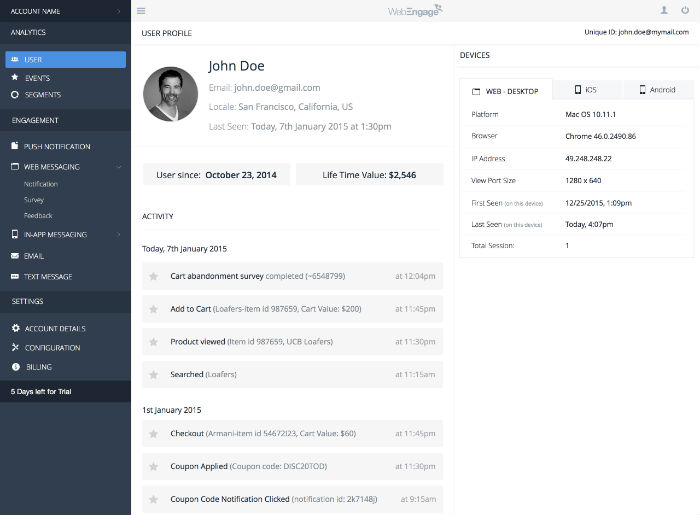
Says Avlesh, “We were always clear on this unified view for a customer. We announced it separately for branding and marketing. Initially, we had thought to let AppEngage be, bring in traffic through that to WebEngage. However, for sanity sake we decided to get rid of all that.”
For sanity sake we decided to get rid of all that (AppEngage).
No wonder, this metamorphosis to a complete DIY marketing automation tool challenged a lot of the team’s technical assumptions. For a smooth transition, the team has been working full time and has deployed an active feedback channel. To begin with, the launch is being announced in phases to clients. If those who went to the new site went back to the old one, they are being intercepted and questioned about their experience in order to resolve challenges. One on one communication is being done with existing customers to explain to them the new product, what benefits will accrue to them, how to look at their user data and activities.
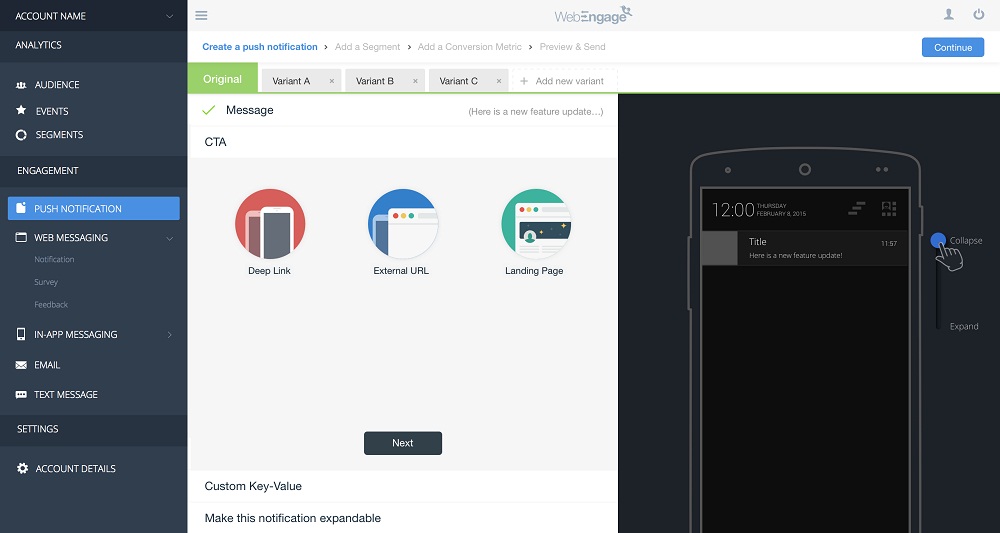
The road ahead is challenging given the overhaul in the company’s image. Says Avlesh, “The tough challenge is in aligning expectations as people thought of us as something else. All this revamp was being done under the radar. So all of a sudden things will change. So obviously there are challenges in communication, pricing, meeting expectations and bridging the gap. However the good thing is that they [customers] won’t have to go to their development team to change anything. The transition will be very smooth as everything will be automated – they’ll just have to click through a few options and everything will just start working. All we have to tell them after that is how to look at the new WebEngage. Mobile is an obvious extension, and they knew we were doing it. Emails and text messages will come as a shock to them, if at all it does. Of course, the whole idea of gleaning data and doing more with it will be new to them and will take time.”
In its new avatar, WebEngage will track all users across web and mobile platforms, wherein customers will get to see enriched user profiles with their entire activity stream. Additionally, customers would be able to engage across five different channels – web messages (the first version), in-app messages & push notifications (on mobile apps), and email and text messages. All of the above data and actions will be available from a single dashboard. The new avatar completely automates communication and engagement across the user life cycle, builds enriched profiles of users, allows customers to send richer emails and text messages to users, and goes in depth into the data stream for its customers, allowing them to target users more effectively. Consequently, the team is doing a lot of training for customers on what the affected changes are, and how they will benefit from them.
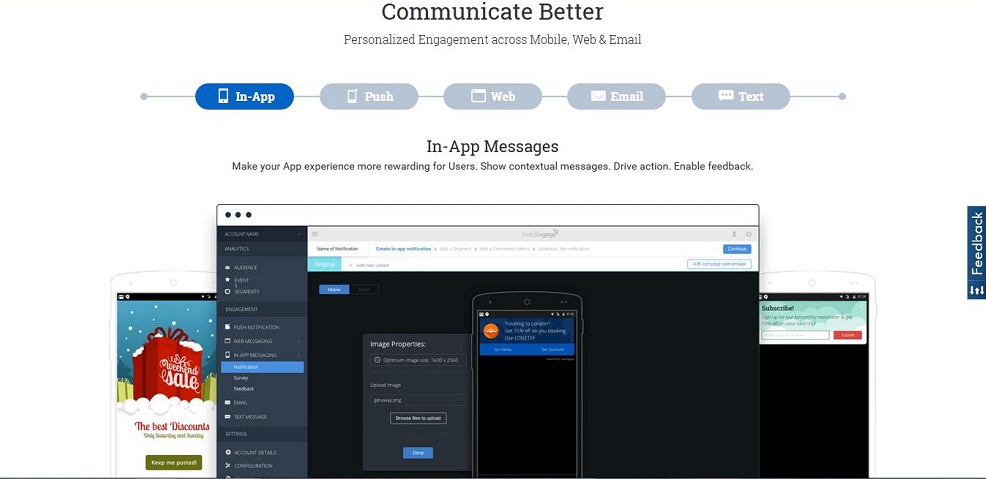
Competition And Defensibility
Given the rise of ecommerce activity and smartphone penetration, there are a rising number of entrants in the mobile marketing space such as MoEngage, Localytics and Kahuna to name a few. Similarly, players like Intercom operate in the email marketing space. Avlesh however feels that WebEngage is differentiated from the others by the fact that it tries to engage that anonymous user on the website.
He adds, “We created that guy. No one was dealing with that guy. This whole idea of anonymous ad engagement based on activity is what we do at WebEngage. Now with the new product, we have integrated all three – we now can engage the user on app, email, and web.”
Given the rising competition in the space as well as the fact that the big ecommerce firms have in-house technical teams, one may question how defensible is WebEngage? Would it make sense for these firms to create a WebEngage of their own rather than buy?
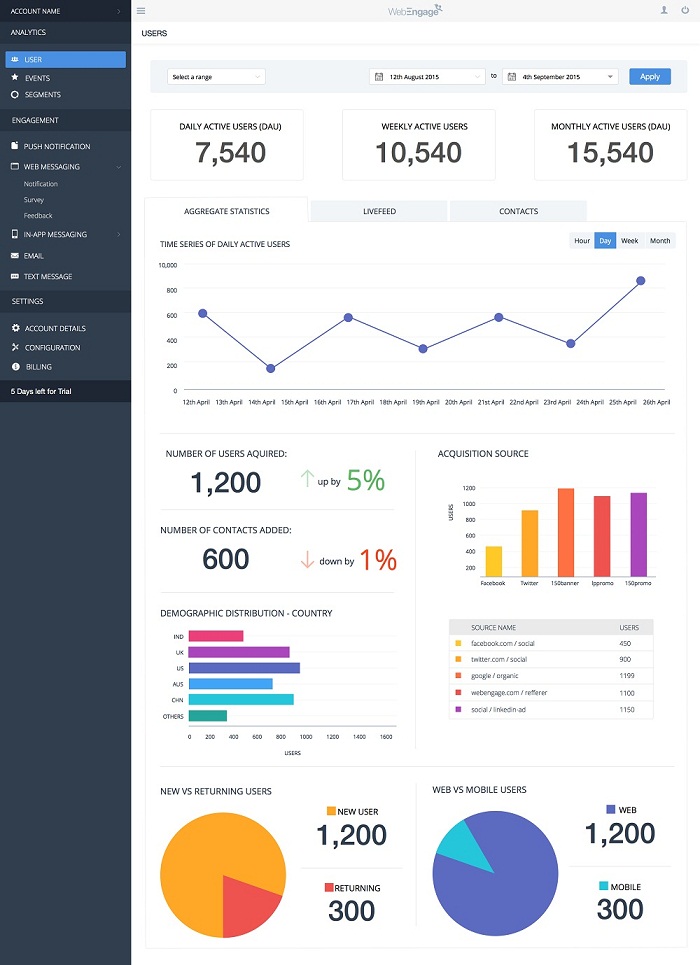
To this Avlesh has a simple answer, “The short answer is that they can, the long answer is that they won’t. Think of it this way. If you are an ecommerce firm, your core function is commerce. Everything else is an ancillary function. All marketing functions are now data driven. If you have to build that level of sophistication which we spent four years to make, you are talking about building a WebEngage. So you can do this or focus on your core function and leave it to companies for whom it is their bread butter. Any sane company worth its salt won’t do this unless it has policies around sharing data. Because tools like us need a lot of data to glean. So the reasons for not engaging us would be around data and not the fact that their engineers can build this too.”
The short answer is that they can, the long answer is that they won’t.
Given the fact that this is a company which practically created the on-site marketing category, bringing that anonymous user in the limelight, it is obvious that ecommerce biggies have chosen to power their sites with WebEngage rather than waste time in creating one! More so with the new product, which will be a comprehensive platform for them to track all user activity across channels, WebEngage seems to have added yet another bastion to its defensibility. It will be interesting to see how the new product augurs for Avlesh’s and Ankit’s dream of delivering a huge SaaS company from India!








